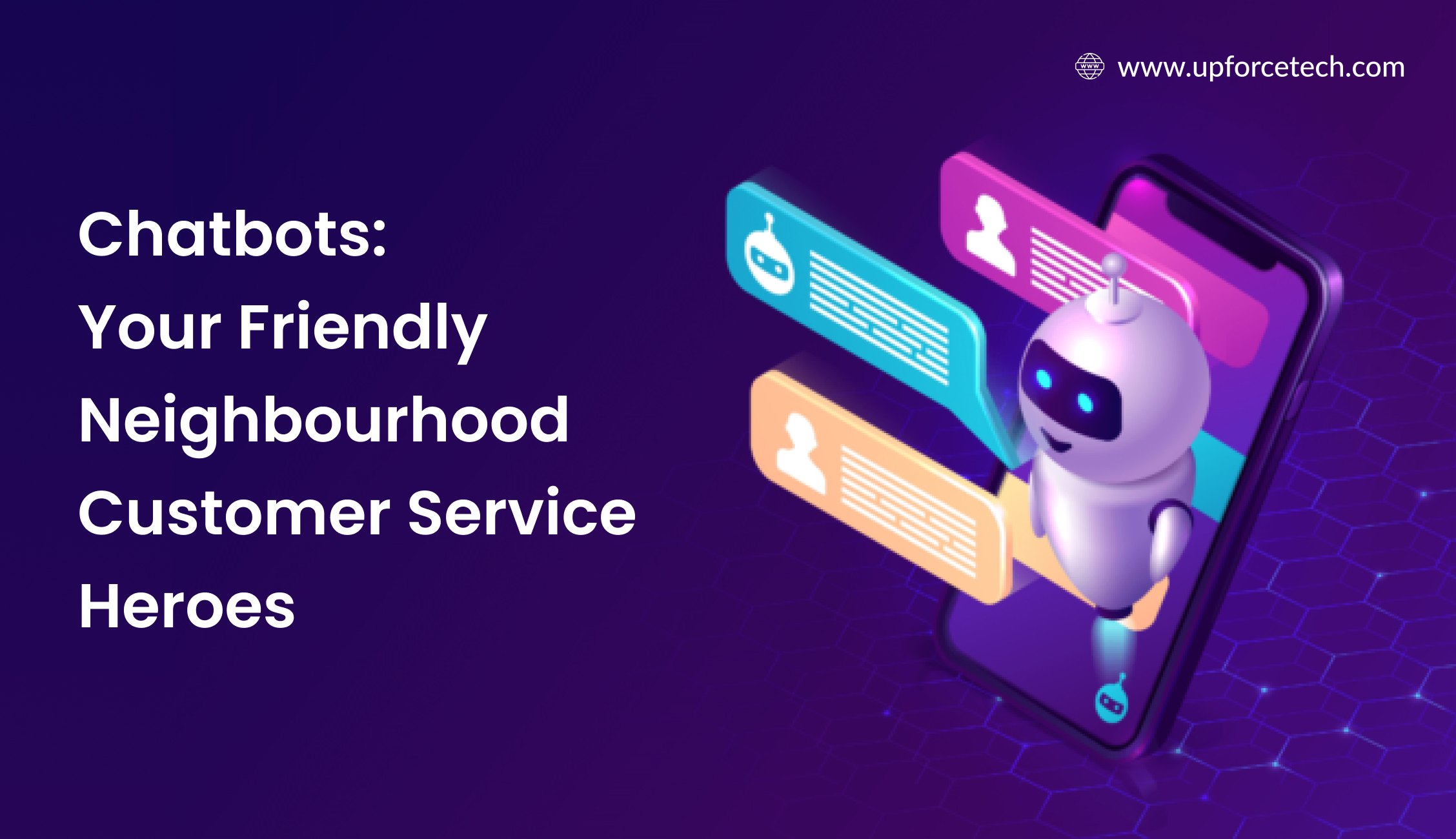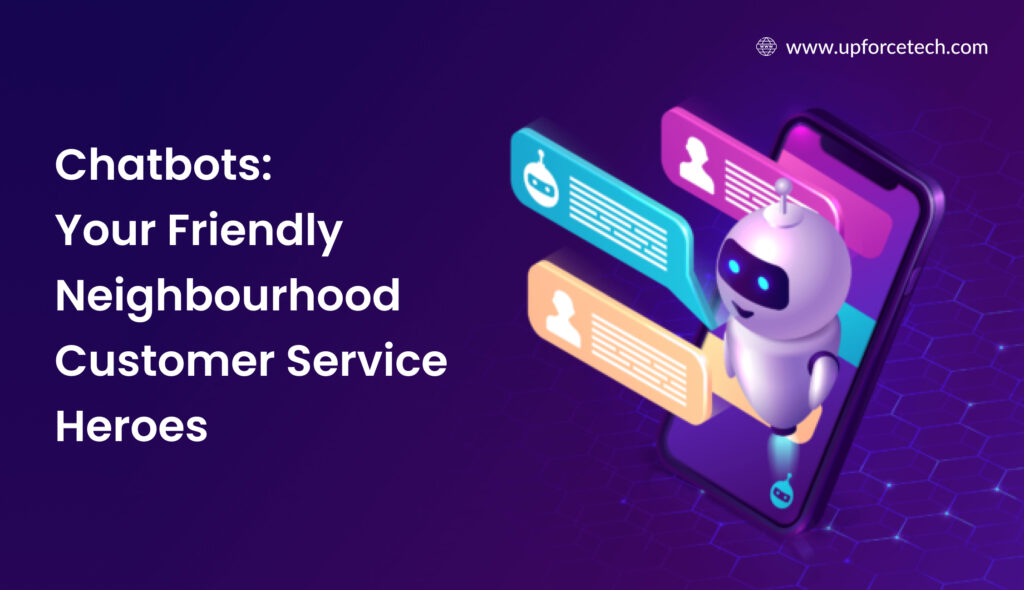The Ultimate Guide to AI Chatbots in 2024

Artificial Intelligence (AI) has revolutionized various industries, and customer service is no exception. AI chatbots are transforming the way businesses interact with their customers, providing instant support, enhancing user experience, and driving efficiency. In this ultimate guide, we’ll delve into everything you need to know about AI chatbots in 2024, from understanding what a chatbot is, exploring the best AI chatbots available, to learning how they work, their types, uses, and much more.
What is a Chatbot?
A chatbot is a software application designed to simulate human conversation through text or voice interactions. Leveraging natural language processing (NLP) and machine learning (ML), chatbots can understand, interpret, and respond to user queries, making them a powerful tool for customer service, marketing, and more.
The Best AI Chatbots in 2024
As AI technology advances, several chatbots have emerged as leaders in 2024. Here are some of the best AI chatbots that are setting the standard:
-
- Known for its conversational capabilities and vast knowledge base, ChatGPT continues to lead the market with its human-like interactions.
-
Google’s Meena
- A sophisticated chatbot designed for high-quality conversations, Meena boasts an impressive ability to understand context and provide relevant responses.
-
Microsoft’s XiaoIce
- Popular in Asia, XiaoIce excels in social and emotional intelligence, making it a favorite for personal and customer interactions.
-
- A robust enterprise solution, Watson Assistant offers powerful tools for building, training, and deploying AI chatbots across various industries.
-
Amazon Lex
- Integrated with AWS services, Amazon Lex is perfect for creating voice and text chatbots, with advanced deep learning functionalities.
The Ultimate Guide to Chatbots
1. Understanding Chatbots
-
What is a Chatbot and How It Works
- Chatbots use NLP to process user input, ML to learn from interactions, and AI algorithms to generate responses. They can be rule-based or use AI for more dynamic and context-aware conversations.
-
Types of Chatbots
- Rule-based Chatbots: Follow predefined paths and responses based on user input.
- AI Chatbots: Utilize AI to understand natural language and provide more flexible, context-aware interactions.
2. Chatbot Examples
-
Customer Support Chatbots
- Examples include bots from companies like H&M and Sephora, providing instant answers to customer queries, product recommendations, and support.
-
Sales and Marketing Chatbots
- Bots like Drift and Intercom help businesses qualify leads, schedule meetings, and provide personalized marketing content.
-
Personal Assistant Chatbots
- Siri, Alexa, and Google Assistant are examples of chatbots that assist with daily tasks, reminders, and information retrieval.
3. Uses of Chatbots
-
Customer Service
- Providing 24/7 support, handling common queries, and escalating complex issues to human agents.
-
E-commerce
- Assisting with product searches, recommendations, and order tracking.
-
Healthcare
- Scheduling appointments, providing medical information, and patient monitoring.
-
Finance
- Helping with account inquiries, transaction details, and fraud detection.
4. List of Chatbots
-
General Chatbots
- ChatGPT, Google’s Meena, Microsoft’s XiaoIce, IBM Watson Assistant, Amazon Lex.
-
Specialized Chatbots
- HealthTap (Healthcare), Cleo (Finance), Woebot (Mental Health).
5. Building and Integrating Chatbots
- ChatBot | AI Chat Bot Software for Your Website
- Tools like Dialogflow, Botpress, and Tars make it easy to build and integrate chatbots into websites and applications.
6. Benefits of AI Chatbots
-
24/7 Availability
- AI chatbots provide round-the-clock service, improving customer satisfaction and operational efficiency.
-
Cost-Effective
- Reducing the need for large customer support teams, chatbots can significantly cut costs.
-
Enhanced Customer Experience
- Providing instant, accurate responses improves user experience and engagement.
-
Scalability
- Chatbots can handle multiple interactions simultaneously, making them ideal for growing businesses.
7. Future Trends in AI Chatbots
-
Increased Personalization
- Advanced AI will enable chatbots to offer more personalized interactions based on user data and preferences.
-
Voice and Multimodal Interactions
- The integration of voice and text, along with visual elements, will make chatbots more versatile and user-friendly.
-
Improved Natural Language Understanding
- Continued advancements in NLP will enhance the chatbot’s ability to understand and respond to complex queries.
8. Challenges and Considerations
-
Data Privacy and Security
- Ensuring user data is protected and used responsibly is critical.
-
Maintaining Human Touch
- Balancing automation with the need for human interaction to avoid frustrating users.
| Feature | Description | Benefit |
|---|---|---|
| 24/7 Availability | Chatbots provide round-the-clock service without the need for human intervention. | Improves customer satisfaction by providing instant responses anytime. |
| Instant Responses | Capable of responding to user queries immediately, without delay. | Enhances user experience by reducing wait times and providing quick solutions. |
| Natural Language Processing (NLP) | Uses NLP to understand and interpret user inputs accurately. | Facilitates more human-like and engaging conversations. |
| Machine Learning (ML) | Learns from past interactions to improve responses over time. | Provides more accurate and relevant responses, improving over time. |
| Multichannel Support | Can be integrated across various platforms such as websites, social media, and messaging apps. | Ensures consistent support across multiple touchpoints. |
| Scalability | Can handle multiple interactions simultaneously without degradation in performance. | Supports growing businesses by managing increased customer inquiries efficiently. |
| Personalization | Tailors responses based on user data and preferences. | Offers a more personalized and engaging user experience. |
| Cost Efficiency | Reduces the need for large customer support teams. | Significantly cuts operational costs and increases efficiency. |
| Data Gathering | Collects and analyzes data from interactions for insights. | Provides valuable insights into customer behavior and preferences. |
| Integration with Systems | Can be integrated with CRM, ERP, and other business systems. | Streamlines processes and provides comprehensive customer support. |
| Automated Routine Tasks | Automates repetitive tasks such as answering FAQs and booking appointments. | Frees up human agents to handle more complex queries and tasks. |
| Improved Engagement | Engages users with interactive and dynamic conversations. | Increases user retention and satisfaction. |
| Consistent Responses | Provides consistent answers based on pre-defined rules and learning. | Ensures reliability and accuracy in information provided to users. |
Future Trends of Chatbots
As AI technology continues to advance, chatbots are evolving to become more sophisticated and capable. Here are some key trends that are expected to shape the future of chatbots:
1. Increased Personalization
Trend Overview: Personalization will be a major focus for chatbots in the coming years. With the ability to analyze vast amounts of user data, chatbots will be able to offer more tailored and relevant interactions.
Implications:
- Enhanced User Experience: By understanding user preferences and behaviors, chatbots can provide personalized recommendations and responses, improving the overall user experience.
- Improved Customer Satisfaction: Personalized interactions can lead to higher customer satisfaction as users feel more understood and valued.
2. Voice and Multimodal Interactions
Trend Overview: The integration of voice recognition and multimodal interactions (combining text, voice, and visual elements) will become more prevalent.
Implications:
- Natural Conversations: Voice-enabled chatbots will facilitate more natural and fluid conversations, making interactions feel more like talking to a human.
- Accessibility: Voice interactions can make chatbots more accessible to users with disabilities or those who prefer speaking over typing.
3. Advanced Natural Language Understanding (NLU)
Trend Overview: Continued advancements in Natural Language Processing (NLP) and Natural Language Understanding (NLU) will enhance chatbots’ ability to comprehend and respond to complex queries.
Implications:
- Accuracy and Relevance: Improved NLU will allow chatbots to provide more accurate and relevant responses, even for complicated or ambiguous questions.
- Context Awareness: Chatbots will be better at understanding the context of conversations, maintaining coherence over multiple interactions.
4. Integration with IoT (Internet of Things)
Trend Overview: Chatbots will increasingly be integrated with IoT devices, enabling more interactive and functional smart environments.
Implications:
- Home Automation: Users will be able to control their smart home devices through chatbot interactions, such as adjusting thermostats, turning on lights, or managing security systems.
- Enhanced Productivity: In business settings, chatbots can interact with IoT devices to streamline operations, such as monitoring equipment status or managing inventory.
5. Proactive and Predictive Capabilities
Trend Overview: Future chatbots will move from reactive to proactive and predictive capabilities, anticipating user needs and initiating interactions.
Implications:
- Proactive Support: Chatbots can offer assistance before users even ask, such as suggesting product recommendations based on browsing history or reminding users of upcoming appointments.
- Predictive Maintenance: In industrial settings, chatbots can predict maintenance needs and alert users to potential issues before they become critical.
6. Emotion Recognition
Trend Overview: Advancements in emotion recognition technology will enable chatbots to detect and respond to user emotions.
Implications:
- Empathetic Interactions: Chatbots that recognize and respond to emotions can provide more empathetic and supportive interactions, particularly in customer service and mental health applications.
- Enhanced User Engagement: Understanding user emotions can help chatbots tailor their responses to better meet user needs, increasing engagement and satisfaction.
7. Robust Security and Privacy Measures
Trend Overview: As chatbots handle more sensitive information, there will be a greater emphasis on security and privacy.
Implications:
- Data Protection: Enhanced security measures will protect user data from breaches and misuse.
- Compliance: Chatbots will be designed to comply with data protection regulations, ensuring user privacy and building trust.
8. Human-AI Collaboration
Trend Overview: The future will see more collaboration between human agents and AI chatbots, leveraging the strengths of both.
Implications:
- Efficiency: Chatbots can handle routine tasks, allowing human agents to focus on more complex and high-value interactions.
- Improved Outcomes: Combining human empathy with AI efficiency can lead to better customer service and support outcomes.
9. Industry-Specific Customization
Trend Overview: Chatbots will become more specialized, tailored to meet the unique needs of different industries.
Implications:
- Sector-Specific Solutions: Industries such as healthcare, finance, and retail will benefit from chatbots that understand their specific requirements and challenges.
- Enhanced Functionality: Customized chatbots can offer more relevant and effective solutions, improving business operations and customer satisfaction.
Case Studies: The Impact of Chatbots Across Industries
1. Retail Industry: H&M
Background: H&M, a leading global fashion retailer, sought to enhance their customer service and streamline the shopping experience on their website and mobile app.
Solution: H&M implemented a chatbot to assist customers with product searches, provide personalized fashion recommendations, and handle common queries related to orders and returns.
Results:
- Increased Engagement: The chatbot significantly increased customer engagement by providing instant assistance and recommendations.
- Improved Sales: Personalized suggestions led to a notable increase in sales conversions and average order values.
- Enhanced Customer Satisfaction: The 24/7 availability of the chatbot improved customer satisfaction by providing immediate support.
2. Healthcare Industry: HealthTap
Background: HealthTap, a digital health company, aimed to provide accessible medical information and support to patients through their platform.
Solution: HealthTap integrated a chatbot to assist users in scheduling appointments, providing medical information, and answering health-related questions.
Results:
- Increased Accessibility: The chatbot made healthcare information and services more accessible to patients, especially during non-business hours.
- Reduced Workload: By handling routine inquiries, the chatbot reduced the workload on healthcare professionals, allowing them to focus on more critical tasks.
- Enhanced Patient Experience: Patients experienced faster response times and a more seamless interaction with the healthcare platform.
3. Banking and Finance Industry: Bank of America
Background: Bank of America sought to improve customer service efficiency and provide personalized financial guidance to their customers.
Solution: The bank introduced Erica, an AI-powered virtual assistant, to help customers with various banking tasks, such as checking account balances, transferring funds, and providing financial advice.
Results:
- Improved Efficiency: Erica handled millions of customer inquiries, freeing up human agents for more complex issues.
- Personalized Assistance: Customers received tailored financial advice based on their transaction history and spending patterns.
- Increased Customer Satisfaction: The convenience and efficiency provided by Erica led to higher customer satisfaction and loyalty.
4. Travel and Hospitality Industry: KLM Royal Dutch Airlines
Background: KLM Royal Dutch Airlines wanted to enhance their customer service by providing real-time assistance to passengers throughout their travel journey.
Solution: KLM integrated a chatbot into their social media channels and website to assist passengers with booking flights, checking flight statuses, and providing travel information.
Results:
- Enhanced Customer Experience: Passengers received instant, accurate information and support, enhancing their travel experience.
- Operational Efficiency: The chatbot managed a significant volume of inquiries, reducing the burden on customer service agents.
- Positive Brand Perception: The innovative use of a chatbot improved KLM’s brand perception as a customer-focused and tech-savvy airline.
5. E-commerce Industry: Sephora
Background: Sephora, a leading beauty retailer, aimed to improve their online shopping experience by offering personalized product recommendations and beauty tips.
Solution: Sephora deployed a chatbot on their website and mobile app to assist customers with finding products, offering beauty advice, and providing virtual try-ons.
Results:
- Increased Sales: The chatbot’s personalized recommendations led to higher sales conversions and larger basket sizes.
- Enhanced Customer Engagement: Interactive features such as virtual try-ons increased customer engagement and time spent on the platform.
- Improved Customer Support: The chatbot efficiently handled a wide range of customer inquiries, improving the overall support experience.
6. Education Industry: Georgia State University
Background: Georgia State University aimed to reduce summer melt (the phenomenon where accepted students fail to enroll) and improve student engagement.
Solution: The university implemented a chatbot named Pounce to answer incoming students’ questions, remind them of important deadlines, and guide them through the enrollment process.
Results:
- Reduced Summer Melt: The chatbot significantly decreased summer melt by providing timely information and reminders to incoming students.
- Increased Student Engagement: Students interacted frequently with Pounce, resulting in higher engagement and a smoother transition to university life.
- Operational Efficiency: The chatbot handled a high volume of repetitive queries, freeing up staff to focus on more personalized support.
Conclusion
AI chatbots are transforming the digital landscape, offering unparalleled benefits for businesses and users alike. By understanding the capabilities and applications of chatbots, you can leverage this technology to enhance your customer service, streamline operations, and stay ahead in the competitive market.
For more insights and to explore how chatbots can benefit your business, visit UpforceTech.
Ready to grow your customer service with AI chatbots? Discover how UpforceTech can help you implement the perfect solution for your business. Contact us today!
Sign up for the free Newsletter
AI chatbots are revolutionizing customer engagement by providing instant, personalized interactions that drive satisfaction and loyalty."
UpforceTech
FAQs
A chatbot is a software application that uses AI to simulate human conversation.
Chatbots use natural language processing to understand user input and generate appropriate responses.
Top AI chatbots include ChatGPT, Google's Meena, Microsoft's XiaoIce, IBM Watson Assistant, and Amazon Lex.
There are rule-based chatbots and AI chatbots.
Chatbots are used in customer service, e-commerce, healthcare, finance, and more.
They provide 24/7 support, reduce costs, enhance customer experience, and offer scalability.

